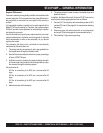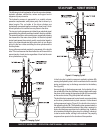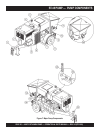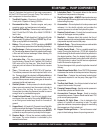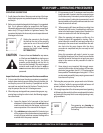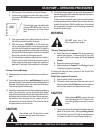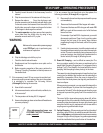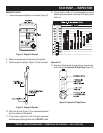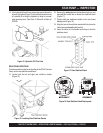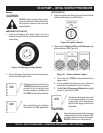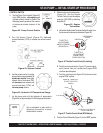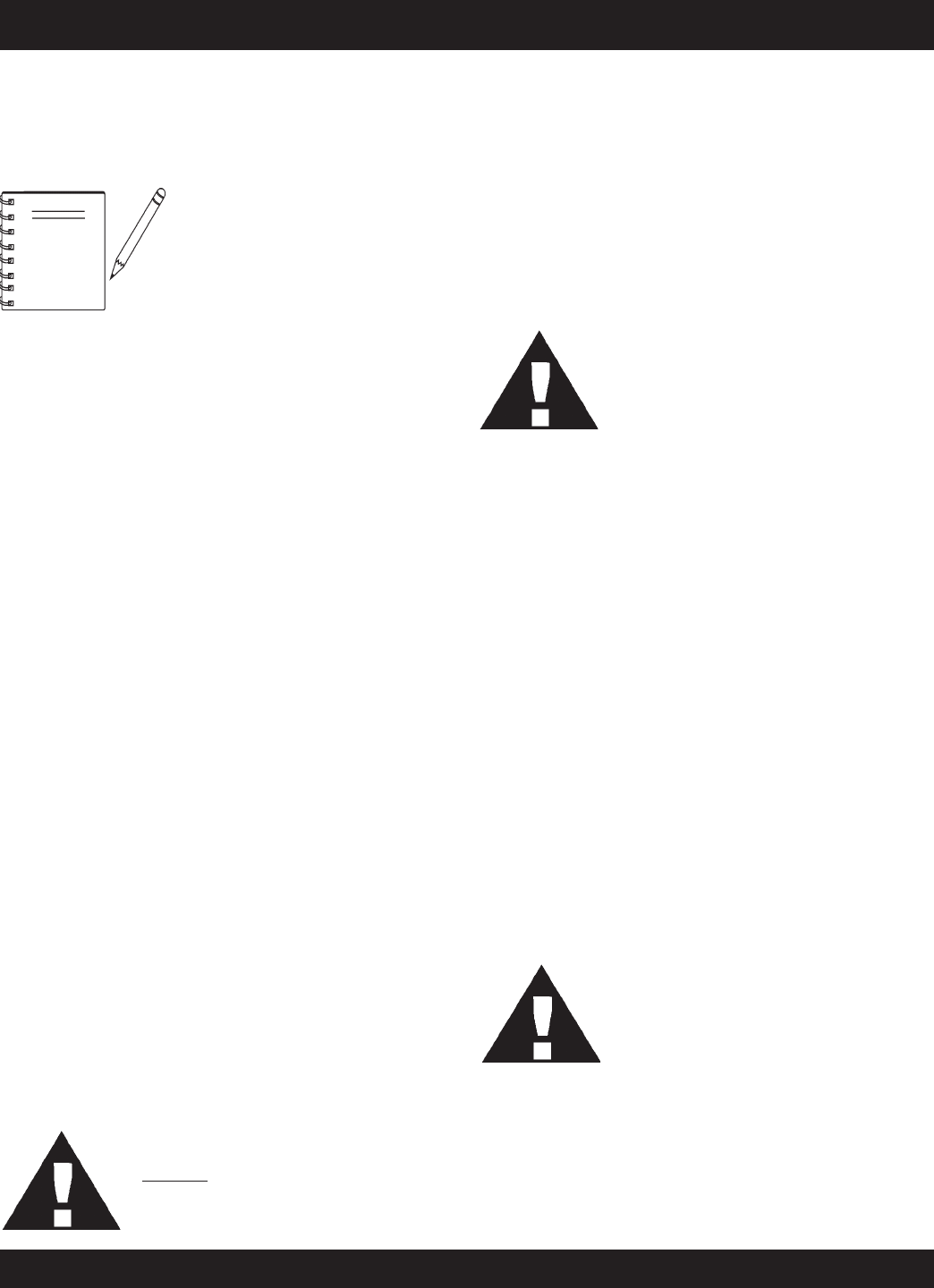
PAGE 26 — MAYCO ST-45HRM PUMP — OPERATION & PARTS MANUAL — REV. #4 (07/16/04)
ST-45 PUMP — OPERATING PROCEDURES
WARNING
DO NOT open any of the
delivery system joint clamps.
Saftey glasses MUST be worn at all times
when operating the ST-45. Failure to fol-
low saftey guidlines can result in serious
injury.
“Reverse” Pumping Procedure
A. Switch the pump into
reverse
. With pump speed at a
medium-slow (approx. 12 strokes per min.) try to pull
the “pack” back into the hopper with 5 or 6 reverse
strokes.
B. Remix the concrete in the hopper.
C. Switch the pump into
forward
. If it is still plugged, repeat
“Reversing” procedure three times.
If concrete still does not move, proceed to the Shuttle Tube
Inspection Procedure.
Shuttle Tube Inspection Procedure
A. Stop the pump. Switch off the engine.
B The senior or most experienced operator must warn all
others to stand at least 20 feet away from the machine
and turn their heads to face away from the pump.
C. The operator will position themself beside the reducing
elbow at the pump outlet. Wearing
safety glasses
,
slip the end of a pry bar (24" length of reinforcing steel
rod) under the latch of the hose clamp and flip it up.
C. Mix the prime to the consistency of a smooth batter.
D. Position the first ready-mix truck at the hopper. Check
the concrete. DO NOT discharge concrete into hopper
at this time.
NOTE
E. Pour approximately two 5 gallon buckets of prime into
the first hose and connect it to the pump.
F. With the pump in FORWARD at 25-30 strokes per
minute, slowly discharge the concrete from the ready-
mix truck into the hopper and completely fill it. Keep the
pump running continuously until concrete is discharging
at the end of the delivery system. If the pump is stopped
during this procedure, a blockage may occur.
G. If it is necessary to replace or add a section of delivery
system, after the initial lubrication procedure, wet the
inside area of the hose, pipe or elbow with 5 gallons of
water per 25 foot length, before adding it to the system.
The bentonite is not compatible with
concrete. DO NOT pump it into the
forms discharge it out of the formed
area.
Use extreme care! The hose line is under
pressure
and can cause serious injury.
Clearing Concrete Blockage
13. Damaged hoses with internal restrictions can cause block-
ages.
14. If a blockage occurs in a hose,
walk the hose
until you find
the point of trouble. The hose will be soft immediately past the
blockage. If this happens at the start, disconnect the hose at
the first coupling past the blockage.
15. Elevate the hose at that point with the blockage area hanging
down. Using a hammer, you can pound the down-stream
edge of the packed area until it is free to flow. Shake all of the
sand and gravel out to the end of the hose. Before reconnect-
ing the hose, start the pump and run a small amount of
concrete out to the end of the hose. This will assure that all
of the separation is out of the hose.
16. The shuttle tube is plugged if volume at the discharge end of
the hose stops, the hose is soft and the hydraulic oil pressure
gauge reads 3000 psi or more.
To clear a plug in the shuttle tube, great care must be taken
as a dangerous condition will exist from pressure build-up
inside the shuttle tube. (With the shuttle valve, the concrete
can be pumped in reverse.) Use the following prodedures
to clear the shuttle tubes.
CAUTION
CAUTION



